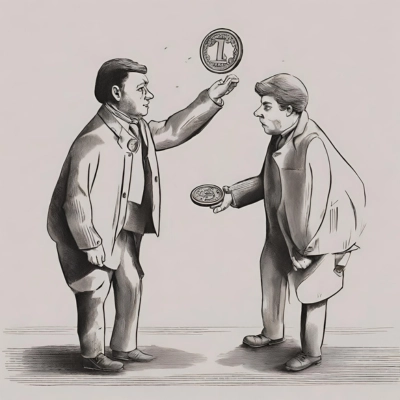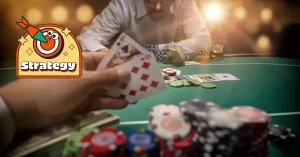The Gambler’s Fallacy in Gambling and Casinos

Gambling is a fun pastime for most, but with it comes a dangerous belief—and that belief is known as the gambler’s fallacy. This phenomenon is the absolutely false assumption that if something happens more frequently than normal in the past, it is less probable in the future (or vice versa) in circumstances where these events are not related.
For instance, this fallacy might lead someone to wrongly presume that if a flipped coin shows heads twice consecutively, it just has to land on tails on the next flip.
Knowing what the gambler’s fallacy is and how to avoid putting any misguided belief in it is crucial, as it can influence people’s thinking and decisions not only in gambling but in everyday life decisions. We are going to explore everything about the gambler’s fallacy, including its psychological underpinnings, and give you some tips to avoid falling prey to it with online gambling apps!
What Exactly is the Gambler’s Fallacy?
The gambler’s fallacy manifests in two interrelated ways:
Believing that a frequent, past independent event becomes less probable in the future.
or
Thinking that a less frequent, past independent event is more likely in the future.
Both beliefs stem from a false expectation of a systematic reversal in random sequences of independent events, a misunderstanding since the independence of events means past occurrences do not influence their future occurrences.
Consider rolling a pair of dice, both landing on 6. The probability of this in a fair roll is 1/36. Here, the gambler’s fallacy might lead to the mistaken belief that rolling double 6s again is less probable than 1/36. However, the reality is that each roll has a 1/36 chance of landing on double 6s, independent of previous rolls.
This highlights the importance of distinguishing between the odds of a sequence of outcomes and the odds of an individual outcome following an independent sequence. For example, a fair coin landing on heads five times consecutively has odds of 0.5^5, but the odds of it landing heads on any single toss remain 0.5, independent of prior tosses.
Gambler’s Fallacy Examples
The gambler’s fallacy manifests itself, for instance, in the false assumption that a series of successive heads must inevitably lead to a “tails” outcome. Another common gambler’s fallacy is the false assumption that the likelihood of a die rolling a particular number (such as 6) will decrease the subsequent rolls.
When they gamble, most people’s thoughts fall prey to the gambler’s fallacy, as the term implies. In addition to the aforementioned instances involving dice and coins, another illustration of this is the erroneous assumption that a particular number’s likelihood of being chosen again in a forthcoming lottery draw is lower if it was drawn lately.
The Most Famous Case of the Gambler’s FallacyThis case occurred way back in 1913 at the Monte Carlo Casino during a roulette game. The ball landed on black a stunning 26 times in a row, which was super rare–in fact, it was unheard of. Bettors lost millions of dollars thinking the ball was “due” to land on red in the next few spins because they were wrong.
In addition to influencing gambling-related decisions, the gambler’s fallacy can impact people’s thinking and decision-making in other domains as well. In the context of childbirth, for instance, the gambler’s fallacy leads many to assume that a woman who has given birth multiple times to the opposite gender is “due” to have a kid of that gender. It’s absolutely wild that it’s so common, right? We can all relate to pinning our hopes that the next time simply has to turn out in our favor if we’ve experienced some bad luck—I know I can.
The Psychology Behind the Gambler’s Fallacy
The gambler’s fallacy is a cognitive bias stemming from expecting even short outcome sequences to be highly representative of their generating process. It’s linked to seeing chance as self-correcting, leading to the belief that outcomes will balance out short-term.
The fallacy arises from the incorrect belief in local representativeness, where people expect small sample traits to reflect the larger population. This is also known as the law of small numbers, a false belief that small samples closely represent the larger source.
Other explanations include a Gestalt approach to event sequences, where people perceive nonexistent patterns and connections, influenced by heuristics and mental shortcuts that can lead to erroneous judgments.
How to Avoid the Gambler’s Fallacy
To counter the gambler’s fallacy, awareness of its presence in reasoning is crucial but often insufficient alone. Additional debiasing techniques include emphasizing the independence of events and considering that outcomes don’t influence each other.
One can internalize this by questioning how outcomes might influence subsequent events. Using simple examples like dice rolls or coin tosses can help illustrate the concept of event independence. Furthermore, implementing general debiasing techniques, such as slowing down the reasoning process and creating a distraction-free decision-making environment, can also be effective.
Ultimately, to avoid the gambler’s fallacy.
- One should recognize its influence on thinking.
- Demonstrate the independence of the events in question.
- Explain the flawed reasoning.
- Use relevant examples for illustration.
- And apply general debiasing strategies.
Events Are Not Always Independent
Bear in mind that occasionally, an improbable result can indicate that events are not genuinely random and independent.
Take, for instance, flipping a coin. The probability of a fair coin showing heads five consecutive times is around 3 in 100. This probability is not exceptionally low, so observing this outcome shouldn’t immediately raise doubts. Additionally, if a coin consistently shows heads in ten successive flips, this doesn’t necessarily imply the coin is biased, as the chance of this happening with a fair coin is about 1 in 1,000.

However, consider a scenario where a coin lands on heads 50 times without interruption. The odds of this happening are roughly 1 in 1.126 quadrillion (1 in 1,126,000,000,000). In such a rare event, it becomes logical to suspect the coin might not be balanced. This rarity makes it quite plausible that the coin will land on heads in subsequent tosses based on its previous behavior.
Therefore, while it’s crucial to understand the gambler’s fallacy and not presume that independent events influence each other, it’s equally vital to recognize that exceptionally rare outcomes may hint at a lack of independence among events, a factor to consider in decision-making processes.
Variables: Independent and Identically Distributed
In discussions about the gambler’s fallacy, the term often used is “independent and identically distributed” (i.i.d.), applicable to scenarios like dice throws and coin flips. Here, ‘independent’ implies that the outcomes, such as those of coin flips, don’t affect each other. ‘Identically distributed’ signifies that these outcomes share the same probability distribution – they have similar chances of resulting in comparable outcomes.
It’s Important to UnderstandThat, i.i.d. variable outcomes don’t necessarily have to be equally probable. This means they aren’t required to occur with the same frequency. For instance, a biased coin might have a higher tendency to land on heads than tails. Yet, a sequence of flips of this biased coin would still be considered identically distributed, as the likelihood of landing on heads remains consistent with each flip.
Takeaways
So, what did we learn today, lucky lads and ladies? That the gambler’s fallacy is a wildly mistaken notion that if an event happens more frequently than usual in the past, it will occur less often in the future, and vice versa, particularly in situations where these events are totally unrelated. The best (and simplest) example of this fallacy is when someone thinks a coin that has landed on heads twice is more likely to land on tails next. Spoiler alert: it’s not.
This fallacy stems from the expectation that even brief sequences of results should accurately represent the process that generated them, reflecting the idea of fairness and self-regulation. To avoid falling into the gambler’s fallacy trap, awareness of its impact on our thinking is needed, and you have to be aware of the independence of the events involved. It’s also important to map out the many flaws in this reasoning, know the examples, and apply common sense methods like slowing down the thought process when gambling either online or in a traditional brick-and-mortar casino.
Keep in mind when coming to grips with the gambler’s fallacy that occasionally, a series of extremely unlikely outcomes may hint that the events are not at all random or independent of one another—it’ll save you your sanity and your money!

Alyssa contributes sportsbook/online casino reviews, but she also stays on top of any industry news, precisely that of the sports betting market. She’s been an avid sports bettor for many years and has experienced success in growing her bankroll by striking when the iron was hot. In particular, she loves betting on football and basketball at the professional and college levels.








